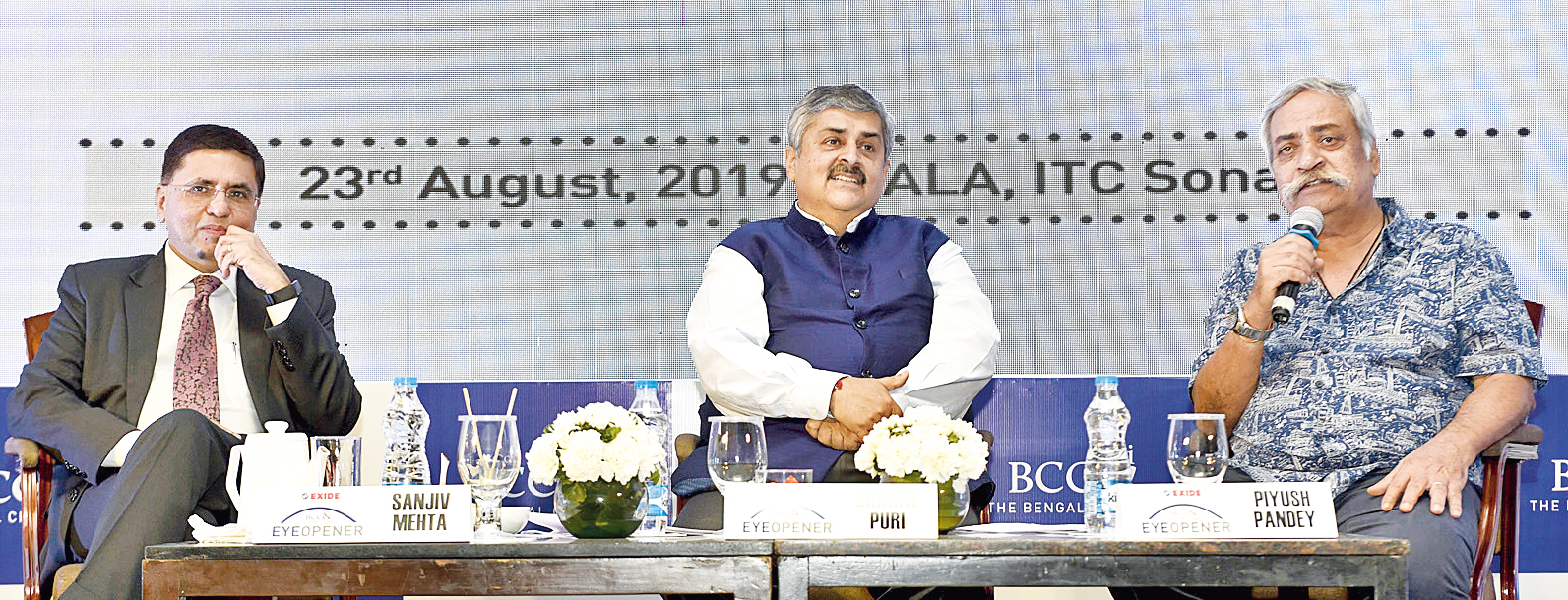Meeting consumers on the ground and getting to know them, rather than crunching numbers, holds the key to successful brand-building, industry captains and an advertising veteran asserted at a conclave in the city on Friday.
Bengal Chamber of Commerce and Industry EyeOpener — a marketing and brand conclave on The Millennial Consumer and Future CMOs, in association with The Telegraph, discussed the challenges faced by brands in dealing with the new-age consumer.
The highlights of the conclave:
Dhaba over data
“Go out and meet people. Spend time at roadside dhabas, visit a roadside bar. Eyes and ears open and feet on street. That is the best way to know your consumer,” said Piyush Pandey, chief creative officer worldwide and executive chairman India, Ogilvy and Mather.
The man behind some of India’s most memorable advertising campaigns from Cadbury’s Kuchh khaas hain to Fevicol ka majboot jod hai tootega nahin was speaking at the final session of the conclave.
Co-panellist Sanjiv Mehta, the chairman and managing director of Hindustan Unilever, recalled how the company had acquired a Kerala-based hair oil brand in 2015 after he personally interacted with users of the product.
“The deal was made at around Rs 350 crore. Its current valuation is around Rs 2,000 crore,” he said.“Data will support and supplement but never substitute human interaction.”
Share and care
The nature of business is changing and brands have to adhere to the change, the speakers summed up.
“The way capitalism has played out has some serious flaws,” Mehta said, citing reports of 50 per cent of the country’s wealth is owned by one per cent of its population. He also cited how the purpose of business was shifting from only creating value for shareholders to creating value for customers, investing in employees and caring for the community and environment.
“Companies with purpose live longer and brands with purpose grow faster,” he said.
Bharat Puri, the managing director of Pidilite Industries, the makers of Fevicol, compared the evolution of marketing with cricket. “When we started, marketing was like Test cricket. With the emergence of TV in 1980s, it became like ODIs. Now, it is like T20,” he told the audience of marketing professionals, teachers and students of business schools and entrepreneurs.
“In catering to the new-age consumers, marketers have to be agile, keep innovating and hyper-personalise communication,” he added.
Girl everyone loves
A thumb-sized girl in a red polka-dotted dress has long endeared the country with her tongue-in-cheek and enjoyable one-liners on billboards and in print ads.
Amul’s topical ads are as popular with the millennials as they are with the previous generation.
Jayen Mehta, senior general manager (planning and marketing), Gujarat Cooperative Milk Marketing Federation, looked back at the Amul story. “Keeping your finger on the consumer’s pulse, a cost-efficient marketing approach and excelling in core competencies were the tricks behind Amul’s success,” he said.
Other speakers at the conclave were Abhijit Bhattacharya, general manager and category heat, CEAT; Ajay Kakar, CMO, Aditya Birla Capital; Sarvesh Kumar, chief marketing, BPRS-B2C, Tata Steel; Suparna Mitra, chief sales and marketing officer — watches and accessories, Titan Industries; Kiran Khalap, founder, Chlorophyll Brand Consultancy; Anupam Bokey, VP-marketing, Guiltfree Industries Ltd; Mithun Sundar, head, revenue, strategy and analytics, Myntra; Rahul Pansare, head-marketing and PR, FCA India Automobiles Pvt Ltd; and Rohit Kapoor, CEO, new real estate business, OYO.










